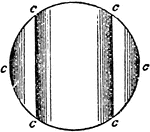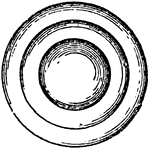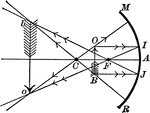Clipart tagged: ‘curvature’

Differential Lens
"Differential Lens.—Horizontal divergence may be obtained to any required amount by varying the radius…

Differential Lens
"Differential Lens.—Horizontal divergence may be obtained to any required amount by varying the radius…

Differential Lens
"Differential Lens.—Horizontal divergence may be obtained to any required amount by varying the radius…

Flattened Eye
"A representation of the manner in which the image is formed in the eye, when the cornea or crystalline…

Magnetic Curves
An illustration of magnetic curves, "the name given to those curves in which an infinite number of very…

Rays Diverging from Beyond the Center of Curvature on a Concave Mirror
"When the rays diverge from a point beyond the center of curvature, as B, the focus falls on the same…

Image Beyond the Curvature of a Concave Mirror
"When the object is at a distance from the mirror somewhat greater than the center of curvature, as…

Near-sighted
"A representation of the manner in which the image is formed in the eye of a near-sighted person. The…

Perfect Eye
"A representation of the manner in which the image is formed upon the retina in the perfect eye. The…